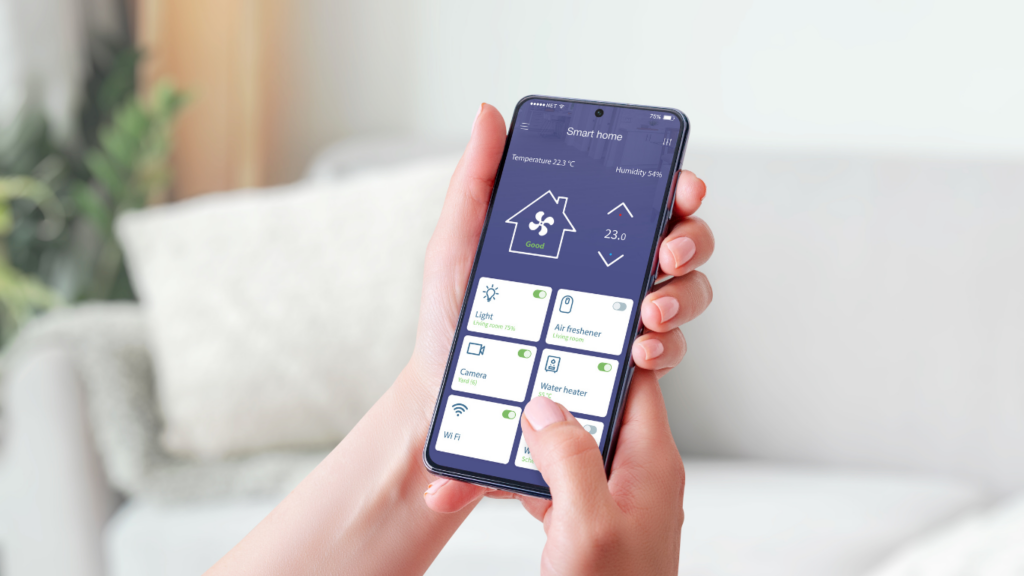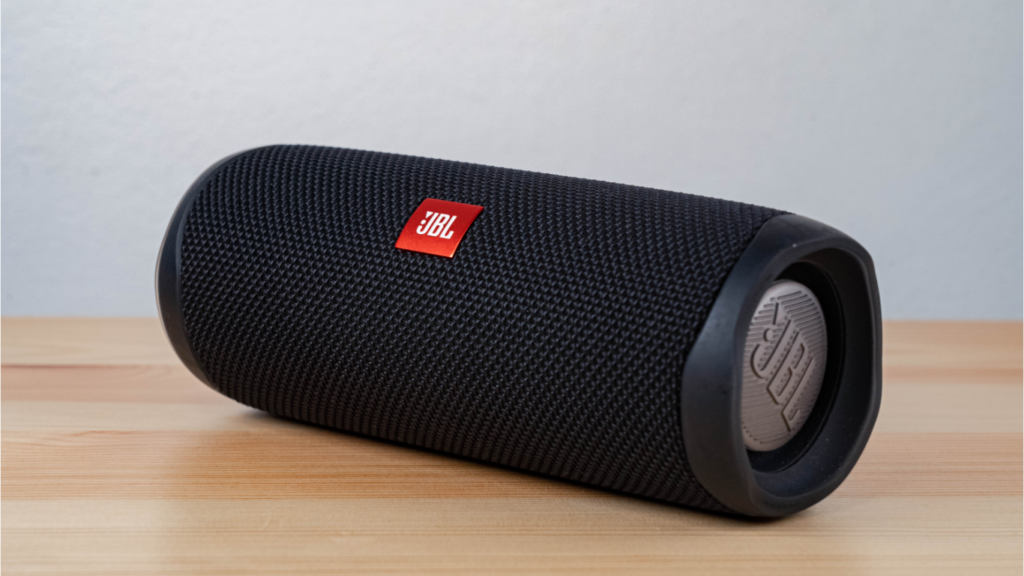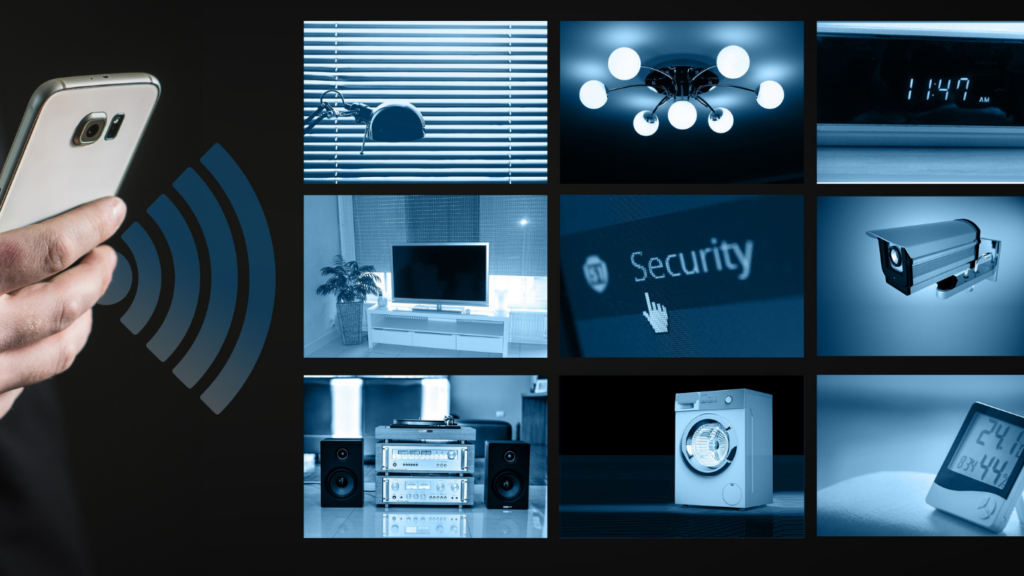Understanding Smart Home Automation
Smart home automation integrates various devices and systems to provide a seamless and connected living environment. Utilizing smart technology, it allows you to control lights, thermostats, security systems, and other appliances from your smartphone or with voice commands.
Benefits of Smart Home Automation
- Convenience
Access and control your home devices from anywhere, reducing daily tasks and making life easier. - Energy Efficiency
Smart thermostats and lighting can adjust based on your habits, saving energy and lowering utility bills. - Security
Smart locks, cameras, and sensors enhance home security by providing real-time alerts and remote monitoring.
Key Components of Smart Home Automation
- Smart Hubs
Centralize control of various devices, acting as the brain of your smart home. - Smart Devices
Include bulbs, thermostats, locks, cameras, and more, all connected through your hub or directly through Wi-Fi. - Voice Assistants
Facilitate hands-free control and interaction with your smart devices using Alexa, Google Assistant, or Siri.
Setting Up Your Smart Home
- Choose a Smart Hub
Select one that supports a wide range of devices and integrates well with your preferred ecosystems like Google Home or Amazon Echo. - Select Compatible Devices
Ensure the devices you purchase are compatible with your chosen hub to avoid connectivity issues. - Install and Configure Devices
Follow manufacturer instructions to set up each device, linking them to your hub or app for unified control.
- Create Routines
Set up automated routines to perform tasks like turning off lights when you leave home or adjusting the thermostat at bedtime. - Use IFTTT
“If This Then That” allows for advanced automation by creating chains of conditional statements for your devices. - Monitor and Adjust
Regularly review your automation settings to ensure they meet your evolving needs and optimize performance.
Understanding smart home automation helps you create a more convenient, efficient, and secure living environment, enhancing your daily life through connected technology.
Essential Gadgets for Beginners

Starting with essential smart home gadgets simplifies your automation journey and lays a solid foundation for future expansions.
Smart Speakers
Smart speakers, like the Amazon Echo and Google Home, act as the central hub for your smart home. These devices offer voice control, stream music, and manage other connected gadgets. For instance, you can adjust your smart lights, locks, and even your thermostat using voice commands. To enhance convenience, pair the speaker with other smart devices in your home setup.
Smart Lighting
Smart lighting systems, like Philips Hue and LIFX, bring flexible control and energy efficiency. These lights can change color, dim, or follow schedules based on your preferences. For example, set your lights to gradually brighten in the morning or sync with your smart speaker for voice control. Installing smart bulbs is an easy first step to experience the benefits of automated lighting.
Smart Thermostats
Smart thermostats, like the Nest Thermostat and Ecobee, optimize temperature settings to save energy and boost comfort. They learn your schedule and adjust heating or cooling accordingly. For instance, the thermostat can lower the temperature when you’re away and raise it just before you return. Integrating a smart thermostat with other devices ensures a seamless smart home experience, contributing to cost savings and enhanced living comfort.
Setting Up Your Smart Home System
Initiating a smart home system starts by selecting a central hub, followed by integrating compatible devices to create a connected ecosystem.
Choosing a Hub
Selecting a hub centralizes smart home device management. Popular options include Amazon Echo, Google Nest Hub, and Samsung SmartThings Hub. Each offers distinct features:
- Amazon Echo: Integrates seamlessly with Alexa-enabled devices, ideal for Amazon users.
- Google Nest Hub: Best for those who prefer Google Assistant’s functionalities.
- Samsung SmartThings Hub: Provides broader compatibility, supporting a diverse range of devices.
Evaluate your existing gadgets and future growth plans when picking the right hub.
Integrating Devices
After choosing a hub, linking devices enhances the smart home experience. Here’s a concise way to approach integration:
- Link Smart Lights: Connect smart bulbs like Philips Hue or LIFX to the hub for versatile lighting control.
- Add Smart Thermostats: Sync devices like Nest Thermostat or Ecobee for automated climate management.
- Include Security Systems: Pair components like Ring doorbells or Arlo cameras for enhanced security through real-time monitoring.
Follow the hub’s app instructions to integrate each device, ensuring seamless connectivity and optimal functionality.
Popular Smart Home Platforms
Smart home platforms are essential for managing devices and ensuring a seamless experience. Some of the most popular platforms include Amazon Alexa, Google Assistant, and Apple HomeKit.
Amazon Alexa
Amazon Alexa offers robust voice control and a wide range of compatible devices. Alexa handles tasks like controlling lights, locks, and thermostats. Users can create routines to automate daily activities. Alexa-enabled devices include Echo Dots, Echo Shows, and Fire TV sticks. The Alexa app provides easy setup and configuration.
Google Assistant
Google Assistant integrates well with Android devices and Google apps. Voice commands can manage lights, security cameras, and smart plugs. Users benefit from Google’s search capabilities for quick information retrieval. Devices such as Google Nest speakers, Chromecast, and Nest Hub Max support the Assistant. The Google Home app simplifies device management.
Apple HomeKit
Apple HomeKit offers secure and private smart home automation. Integration with iOS devices like iPhones, iPads, and Apple Watches provides a seamless experience. Siri-controlled commands manage lights, doors, and cameras. Devices such as HomePods, Apple TVs, and HomeKit-compatible accessories ensure easy setup. The Home app centralizes control and automation of all connected devices.
Practical Tips for a Secure Smart Home
Ensuring a secure smart home environment is crucial, with proper setup and maintenance of network security and device authentication.
Network Security
Secure the home network with strong measures. Encrypt the Wi-Fi network using WPA3, the latest and most secure encryption standard. Set a unique, complex password for the router. Update the router’s firmware regularly, as manufacturers release security patches to fix vulnerabilities. Use a separate network for smart devices to isolate them from critical data and ensure better management.
Device Authentication
Use robust authentication methods for smart devices. Enable multi-factor authentication (MFA) where available to add an extra layer of security. Change default passwords immediately after setting up new devices to something more secure. Regularly update the firmware and software of smart devices to patch any security gaps. Consider utilizing biometric authentication methods for added protection.
Benefits of Smart Home Automation
Smart home automation offers numerous advantages, enhancing convenience, security, and energy efficiency for homeowners.
Convenience
Integrating smart devices simplifies daily tasks. Automated schedules for lights, thermostats, and appliances reduce manual intervention. Voice control, through platforms like Amazon Alexa and Google Assistant, enables hands-free operation of various devices, making everyday routines more manageable.
Energy Efficiency
Smart home systems optimize energy usage. Connected thermostats adjust heating and cooling based on occupancy and preferences. Smart lighting systems turn off lights in unoccupied rooms. These adjustments lower utility bills and contribute to environmental sustainability.
Security
Automated systems enhance home security. Smart locks, cameras, and alarm systems provide real-time monitoring and alerts. Remote access allows homeowners to check security status and control devices from anywhere, offering peace of mind.
Customization
Smart home devices offer personalized settings. Users can tailor automation sequences to fit their lifestyle. For example, setting morning routines to gradually brighten lights and start the coffee maker creates a comfortable environment.
Accessibility
Smart home technology aids individuals with disabilities. Voice commands and automated functions simplify interactions with home devices, enhancing independence and comfort. Smart hubs like Amazon Echo and Google Nest Hub provide intuitive interfaces for controlling various devices.
Resale Value
Homes equipped with smart technology attract buyers. Features like smart thermostats, security systems, and energy-efficient lighting increase property value. Potential buyers seek modern conveniences, making smart home automation a desirable investment.
Incorporating these technologies not only improves the quality of living but also offers long-term benefits for homeowners, making smart home automation a worthwhile consideration.
Common Challenges and How to Overcome Them
Transitioning to a smart home can be challenging. Understanding these common obstacles helps in addressing them effectively.
Compatibility Issues
Compatibility is a frequent problem in smart home setups. Devices often belong to different ecosystems (e.g., Amazon Alexa, Google Assistant) and may not communicate with each other. To tackle this, invest in a smart hub that supports multiple protocols (e.g., Zigbee, Z-Wave). This way, one central controller can manage various devices. Moreover, checking device labels for compatibility before purchasing ensures seamless integration.
Connectivity Problems
Maintaining stable internet connectivity is crucial. Smart devices rely on constant internet access for control and updates. Upgrading to a high-speed router can mitigate connectivity issues. Additionally, placing the router centrally and minimizing obstacles improves signal strength. If the network covers a large area, using Wi-Fi extenders ensures consistent coverage.
Security Concerns
Security is a significant concern with smart home devices. Hackers can exploit vulnerabilities if proper measures aren’t in place. Use strong, unique passwords for each device and change them regularly. Enabling two-factor authentication adds an extra layer of security. Regularly update device firmware to patch security flaws.
Technical Complexity
The technical complexity of setting up and managing smart home devices can be daunting. User-friendly interfaces like mobile apps and voice control simplify the process. Many manufacturers offer step-by-step guides and tutorials to ease installation. When unsure, hiring a professional installer can save time and prevent potential issues.
High Initial Costs
Smart home automation can be expensive. The initial investment for devices and hubs might be high. Start with essential devices like smart lights and gradually add more components. Look for sales, bundles, or second-hand options to reduce costs. Over time, the savings from energy efficiency and convenience offset the initial expenditure.
Lack of Interoperability
Interoperability between different brands can be problematic. Sticking to one ecosystem simplifies the setup but limits options. Multifunctional platforms like IFTTT (If This Then That) bridge gaps across different brands, enabling them to work together. Researching compatible devices beforehand avoids compatibility issues.
Understanding these challenges and how to overcome them makes the journey toward a smart home smoother and more enjoyable. Investing time and effort into planning and troubleshooting pays off with a fully integrated and efficient smart home system.





